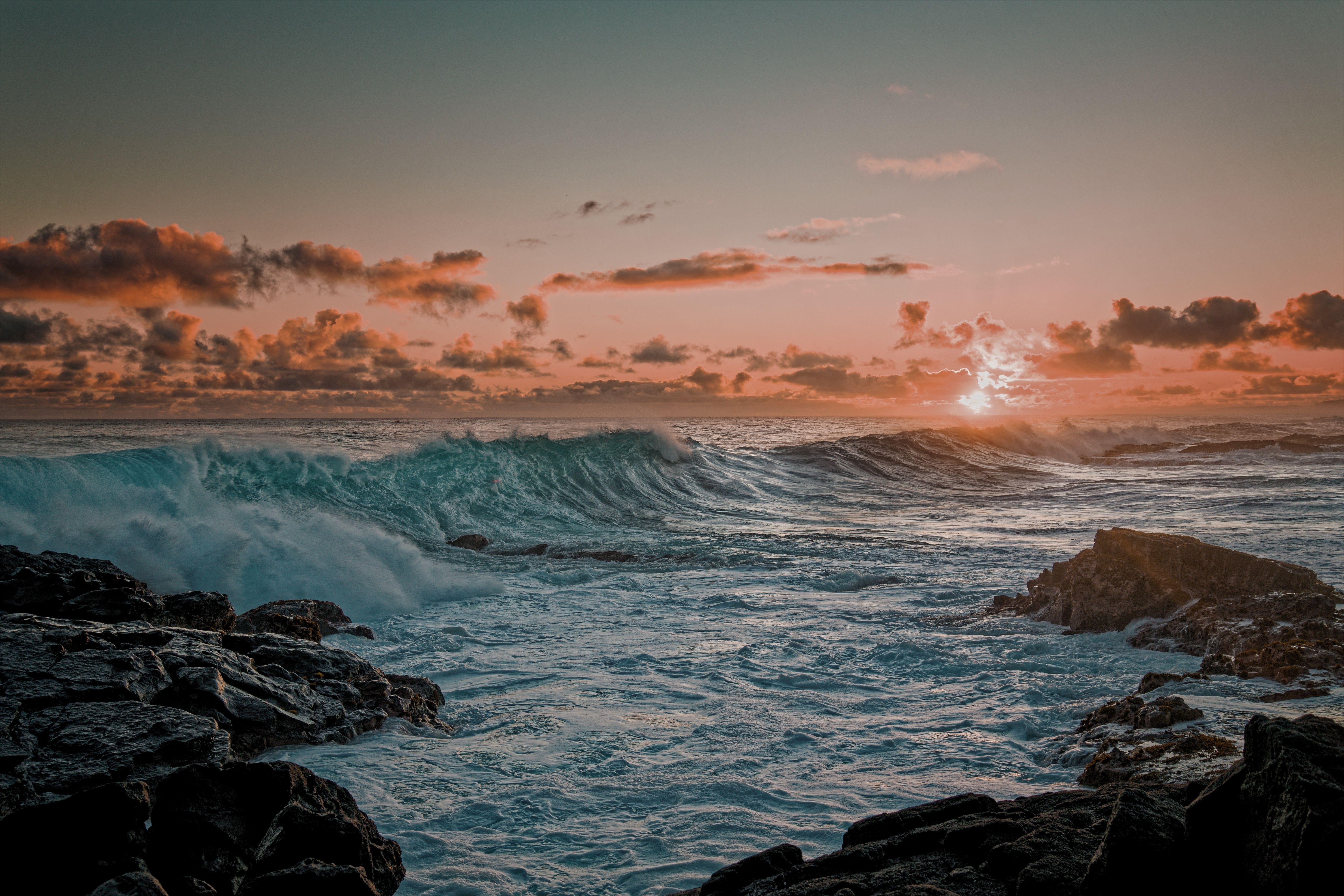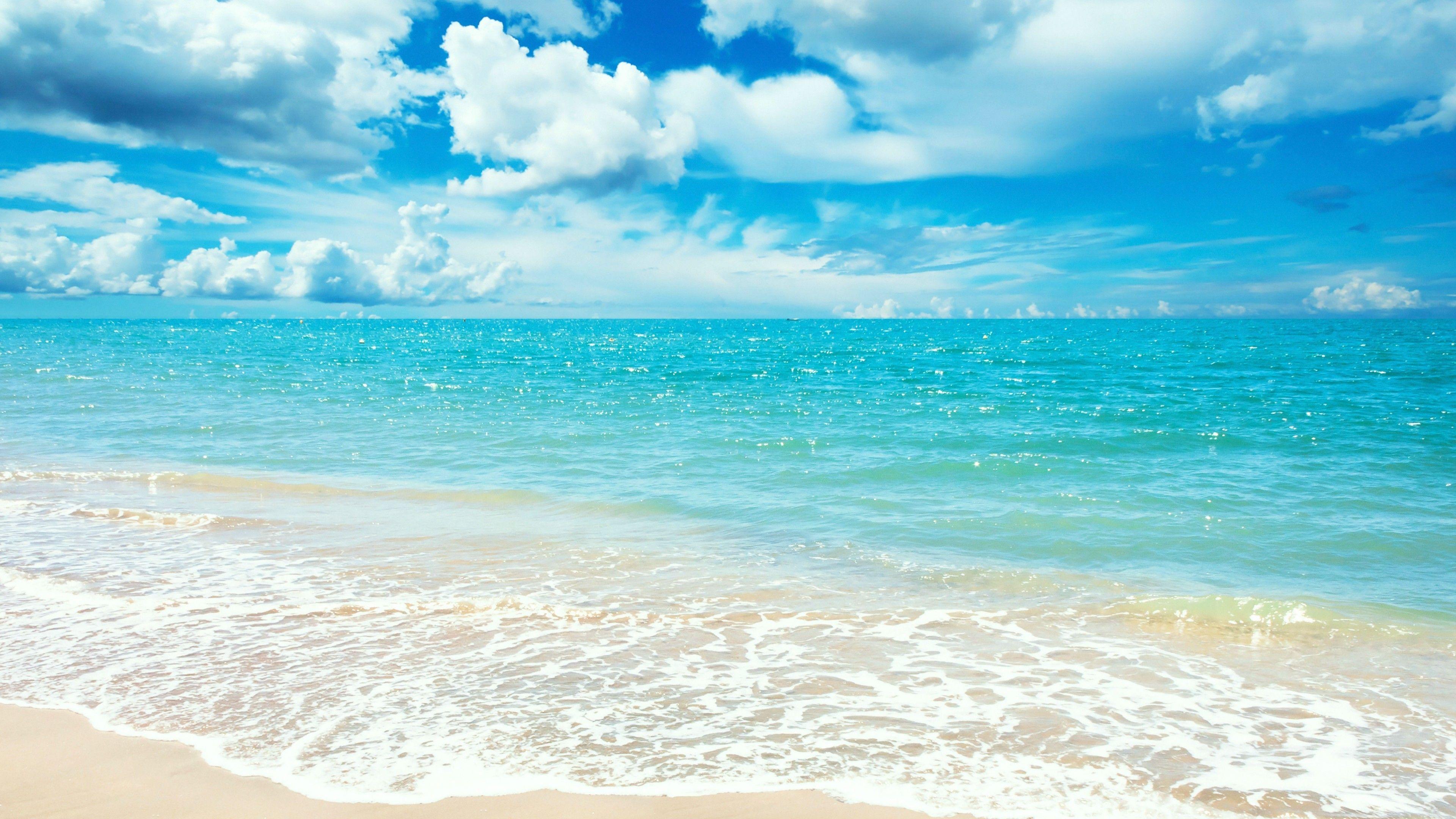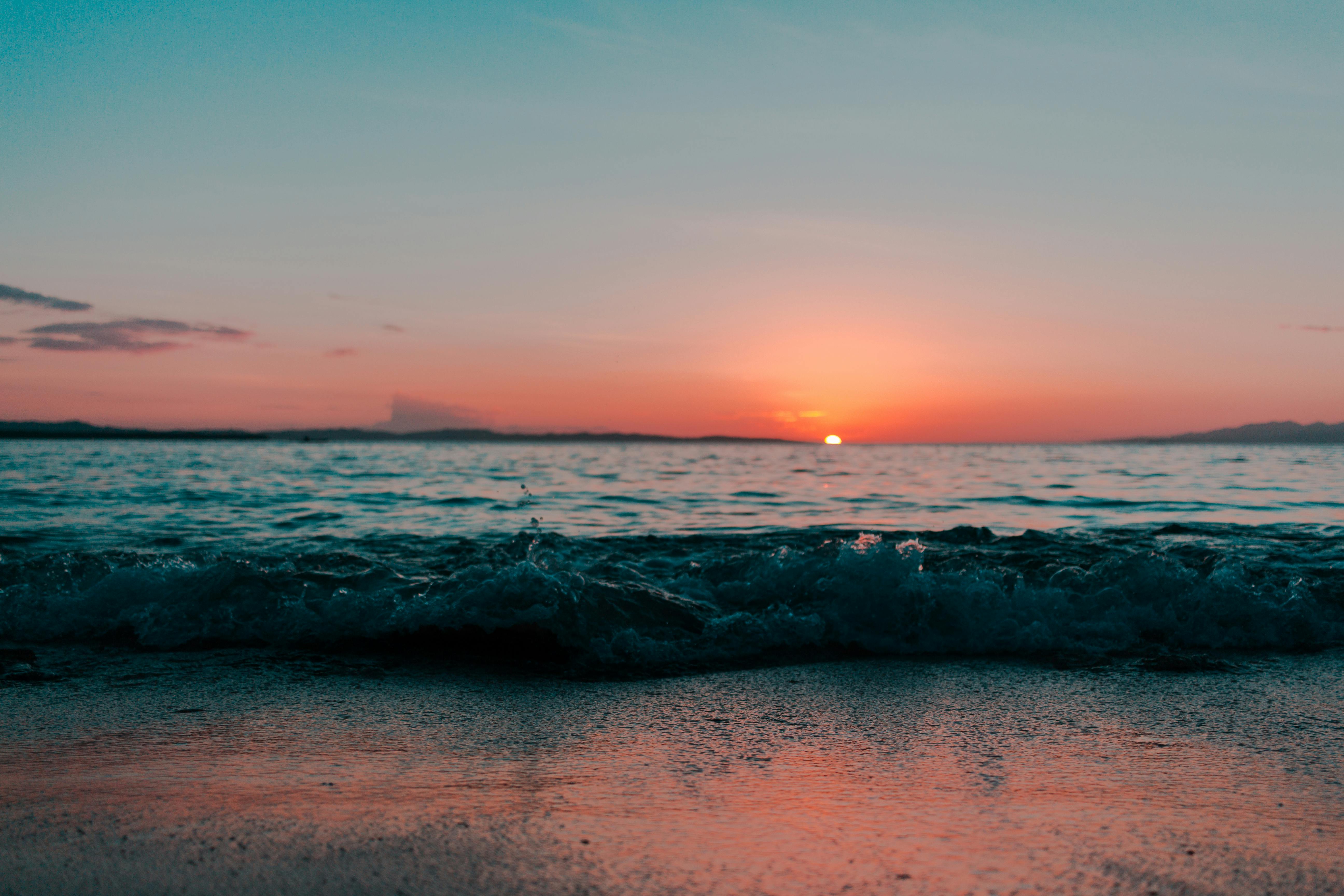Ocean plants play a vital role in our world's aquatic environment, that's a simple truth, you know. They truly come in many forms, from tiny algae to very large kelps. These plants, you see, not only provide food for countless marine animals but also help produce oxygen for the entire planet, which is pretty amazing when you think about it.
It's fascinating, actually, to think about the sheer diversity living beneath the waves. From the sunlit zones near the surface to the deep, dark trenches, different kinds of plant life thrive. We're going to look at some of the most popular and important ones, as a matter of fact, giving you their names and a sense of what they look like.
This guide will help you explore the ocean floor, in a way, and learn about the names of sea plants that live in the ocean. You'll understand their importance to marine ecosystems, too, and perhaps even learn ocean plants names for kids and students with examples. We will look at 18 different types of ocean plants, so it's quite a lot to cover.
Table of Contents
- Introduction to Ocean Plant Life
- The Big Importance of Ocean Plants
- Types of Ocean Plants: Names and Pictures
- Algae: The Ocean's Tiny Powerhouses
- Seagrasses: Underwater Meadows
- Mangroves: Coastal Protectors
- Kelp: Giant Seaweed Forests
- Phytoplankton: Microscopic Oxygen Makers
- Coralline Algae: Building Blocks of Reefs
- Sargassum: Floating Islands of Life
- Red Algae: Diverse and Colorful
- Green Algae: Simple Yet Significant
- Brown Algae: Common and Varied
- Seaweeds: A Broad Category
- Unique Ocean Organisms Sometimes Mistaken for Plants
- Ocean Plants and Climate Regulation
- Understanding Ocean Zones for Plant Life
- Frequently Asked Questions About Ocean Plants
- Appreciating Our Ocean's Green Wonders
Introduction to Ocean Plant Life
The ocean, you know, covers more than 70% of Earth's surface. It contains 97% of the planet's water, which is a lot. This vast, critical reservoir supports an abundance of life, obviously, and helps regulate Earth's climate.
Ocean plants sprout and live underwater, adapting to their watery homes. Discovering the different types in all our oceans helps us see the importance of ocean plants, too. There are millions of species of underwater plants and corals in the ocean, some of which are truly amazing, it's fair to say.
This article attempts to list the amazing and interesting plants that live in the ocean, giving you a glimpse into their world. Some plants are edible and provide health benefits, while others help maintain a balanced ecosystem, which is pretty neat. Let's discuss the different types of ocean plants and what they do for our planet, shall we?
The Big Importance of Ocean Plants
Ocean plants, basically, are the foundation of marine food webs. They convert sunlight into energy, making it available for countless creatures, which is a very important job. This process, called photosynthesis, also releases oxygen, contributing significantly to the air we breathe, too.
Beyond providing food and oxygen, these plants offer shelter and breeding grounds for many marine animals. Think of them as underwater forests or meadows, offering protection and places to live, like your own home, in a way. They help stabilize sediments on the seafloor, preventing erosion, which is quite useful.
The ocean plays a central role in global climate and regional weather patterns, as a matter of fact. Ocean plants contribute to this by absorbing carbon dioxide from the atmosphere. This absorption helps lessen the impact of climate change, which is a big deal, really.
Types of Ocean Plants: Names and Pictures
Let's look at some of the most popular ocean plant species. We'll explore their names and what makes them special. You'll understand types of ocean plants using pictures and common names, which makes it easier to learn.
Algae: The Ocean's Tiny Powerhouses
Algae are a diverse group of aquatic organisms that can perform photosynthesis. They range from microscopic single-celled forms to large seaweeds. They're often considered the primary producers in most aquatic ecosystems, which means they're the base of the food chain, you know.
Microbes oxygenated large swaths of the sea hundreds of millions of years before oxygen surged in the atmosphere 2.4 billion years ago, as a matter of fact. Swaths of oxygen winked in, showing algae's ancient role, basically. They're very important for Earth's history, in a way.
Seagrasses: Underwater Meadows
Seagrasses are flowering plants that grow in shallow, coastal waters. They form vast underwater meadows, which are home to many species. These meadows act as nurseries for fish and other marine life, providing safe places for young creatures to grow, like your own backyard, perhaps.
They have roots, stems, and leaves, just like land plants, which is interesting. Seagrasses help improve water quality by filtering out pollutants. They also stabilize the seabed, preventing erosion, which is a really good thing for the coast.
Mangroves: Coastal Protectors
While not strictly underwater plants, mangroves are trees and shrubs that grow in coastal saline or brackish water. Their roots are often submerged during high tide. They create unique ecosystems at the edge of the land and sea, in some respects.
Mangroves protect coastlines from erosion and storm surges, which is very helpful for human communities. They also serve as important habitats for a wide range of fish, birds, and other animals, offering them food and shelter, so they're quite valuable.
Kelp: Giant Seaweed Forests
Kelp refers to large brown algae that grow in cool, shallow waters. They can form dense underwater forests, similar to forests on land. These kelp forests are incredibly productive ecosystems, supporting a huge variety of marine life, it's true.
Some species of kelp, like Giant Kelp, can grow incredibly fast, reaching lengths of many meters. They provide food and shelter for sea otters, fish, and many invertebrates. Kelp is also harvested for use in various products, including food and industrial thickeners, too.
Phytoplankton: Microscopic Oxygen Makers
Phytoplankton are microscopic marine algae that drift near the ocean's surface. They are the base of most oceanic food webs. These tiny organisms are responsible for producing a significant portion of the oxygen in Earth's atmosphere, which is a huge contribution, really.
They absorb carbon dioxide during photosynthesis, playing a vital role in regulating the planet's climate. Researchers are using satellite data and machine learning to map microplastic concentrations across the ocean, which can affect these tiny but powerful organisms, as a matter of fact.
Coralline Algae: Building Blocks of Reefs
Coralline algae are a type of red algae that deposit calcium carbonate within their cell walls. This makes them hard and rock-like. They are very important for the structure and health of coral reefs, basically acting as a natural cement, you know.
They help bind together the coral skeletons and rubble, providing a stable foundation for the reef to grow. Their presence often indicates a healthy marine environment, which is a good sign, naturally. They're quite tough, in a way.
Sargassum: Floating Islands of Life
Sargassum is a genus of large brown seaweed that floats in huge masses. It forms vast mats on the surface of the ocean, especially in the Sargasso Sea. These floating mats provide a unique habitat for many marine animals, like a little floating city, so to speak.
Fish, crabs, and even sea turtles find food and shelter within the Sargassum. It's an important part of the open ocean ecosystem, offering a place to rest and feed in an otherwise barren environment, which is pretty neat. It's a kind of mobile home, you know.
Red Algae: Diverse and Colorful
Red algae, or Rhodophyta, are a very old and diverse group of algae. They get their red color from pigments that allow them to absorb blue light, which penetrates deeper into the water. This means they can grow in deeper waters than many other types of algae, typically.
They come in many forms, from delicate, feathery structures to hard, crust-like growths. Some red algae are edible and are used in various cuisines around the world, like Nori, which you might know from sushi, for instance. They're quite versatile, in some respects.
Green Algae: Simple Yet Significant
Green algae, or Chlorophyta, are closely related to land plants. They contain chlorophyll a and b, giving them their characteristic green color. They are found in a wide range of aquatic environments, from freshwater to marine, basically everywhere there's water.
Many green algae are single-celled, but some form colonies or larger, multicellular structures. They play a role in nutrient cycling and provide food for various marine herbivores, which is important for the food chain, you know. They're quite common, in a way.
Brown Algae: Common and Varied
Brown algae, or Phaeophyceae, are a large group of mostly marine algae. This group includes many of the seaweeds commonly seen along coastlines, like kelp and rockweed. They are typically larger and more complex than red or green algae, basically.
They have specialized structures that resemble roots, stems, and leaves, though they are not true plants. Brown algae provide important habitats and food sources for marine life. Some species are also harvested for food and for extracts used in various industries, which is useful, really.
Seaweeds: A Broad Category
Seaweed is a general term for several types of marine algae. It includes many species of red, green, and brown algae. Seaweeds are macroalgae, meaning they are large enough to be seen without a microscope, unlike phytoplankton, for instance.
They attach to rocks, coral, or other surfaces in coastal areas. Seaweeds are a vital part of coastal ecosystems, providing food and shelter. They also contribute to oxygen production and carbon sequestration, which is pretty neat. Many are edible, too, offering health benefits, as a matter of fact.
Unique Ocean Organisms Sometimes Mistaken for Plants
It's worth noting that some marine organisms look like plants but are actually animals. There are more than 1,200 species of sea anemone in the ocean, for example, and these are often mistaken for plants. From sea anemones to sun coral, these stunning underwater organisms offer an ethereal beauty hard to reproduce on land, apparently.
Sea Anemones: Flowery Animals
Sea anemones are predatory marine animals. They are named for the anemone, a terrestrial flowering plant, due to their flower-like appearance. They attach themselves to the seabed or rocks and use stinging tentacles to catch food, which is a bit surprising, you know.
They are related to corals and jellyfish. Sea anemones often form symbiotic relationships with other animals, like clownfish, providing them with protection. They are a beautiful part of the ocean floor, but definitely not plants, basically.
Corals: Living Structures
Corals are marine invertebrates that live in colonies. They are animals, not plants, though they build large, plant-like structures. These structures form coral reefs, which are some of the most diverse ecosystems on Earth, obviously.
Many corals have a symbiotic relationship with algae called zooxanthellae, which live within their tissues. These algae provide the coral with food through photosynthesis. This partnership is what allows corals to build their massive structures, which is pretty amazing, really.
Ocean Plants and Climate Regulation
Understanding how the ocean works is foundational to understanding life on this planet and to the discipline of oceanography, you know. The ocean regulates climate by absorbing carbon, which is a big deal. Ocean plants play a huge part in this process, too.
The ways a warming ocean impacts the intensity of storms and the height of the sea are studied by scientists. Ocean acidification is a reduction in the pH of the ocean over an extended period of time, caused primarily by an increase of carbon dioxide from the atmosphere, which affects these plants, basically.
Plants in the ocean, especially phytoplankton, take in vast amounts of carbon dioxide. This helps to lessen the amount of greenhouse gases in the atmosphere. Their health is directly linked to the health of our planet's climate, which is quite important, naturally.
Understanding Ocean Zones for Plant Life
The ocean water column is made up of five zones, you know. These zones dictate where different types of plant life can thrive based on light availability. Ocean biome plants remain a wonder to biologists regarding their survival, feeding habits, and reproduction, in some respects.
The sunlight (epipelagic) zone is where most ocean plants live, as light can penetrate here. Below that are the twilight (mesopelagic), midnight (bathypelagic), abyssal (abyssopelagic), and hadal zones (trenches), where light is very limited or non-existent, so plant life is scarce, typically.
Understanding these zones helps us appreciate the incredible diversity that exists in the ocean, from microscopic organisms to the largest animals on Earth. It helps us see how plants adapt to their specific conditions, too, which is fascinating, really.
Frequently Asked Questions About Ocean Plants
What are the most common types of ocean plants?
The most common types include various forms of algae, such as phytoplankton, kelp, and other seaweeds, you know. Seagrasses are also very common in shallower coastal areas. These groups represent the bulk of plant life found in our oceans, basically.
Why are ocean plants important for the planet?
Ocean plants are incredibly important because they produce a large portion of the Earth's oxygen, which is vital for all life. They also absorb significant amounts of carbon dioxide, helping to regulate global climate, and they form the base of marine food webs, providing food and shelter for countless marine animals, too.
Can humans eat ocean plants?
Yes, many types of ocean plants are edible and provide health benefits, as a matter of fact. Seaweeds like Nori, Wakame, and Kombu are popular in many cuisines around the world. They are rich in vitamins, minerals, and fiber, making them a nutritious addition to a diet, typically.
Appreciating Our Ocean's Green Wonders
The ocean is a vast and critical reservoir of life, and its plants are truly amazing. We've explored some of the names of sea plants that live in the ocean and their importance to marine ecosystems. From tiny phytoplankton that make our oxygen to giant kelp forests that shelter marine life, each one plays a part, you know.
Learning about these plants helps us appreciate the intricate balance of ocean life. It also highlights why it's so important to protect our marine environments. To learn more about ocean conservation efforts on our site, and to explore further details about marine biology, please visit those pages. For more scientific insights into ocean research, you could also visit a reputable oceanographic institution's website, like the Woods Hole Oceanographic Institution (WHOI), which is the world's premier independent organization dedicated exclusively to ocean research, technology, and education, basically.



Detail Author:
- Name : Mike Carroll
- Username : astehr
- Email : lela.hodkiewicz@hotmail.com
- Birthdate : 1986-03-26
- Address : 5801 Brett Locks Apt. 725 South Clark, CT 21102
- Phone : +1-463-221-4110
- Company : Cruickshank, Douglas and Gleichner
- Job : Material Moving Worker
- Bio : Ut ullam modi eveniet neque eos occaecati. Esse quis ex beatae tempora est. Esse rerum autem ea qui rem. Quaerat unde laudantium qui tempore possimus ad ad fugit.
Socials
linkedin:
- url : https://linkedin.com/in/strosin2018
- username : strosin2018
- bio : Ad est consequatur quaerat non minus et libero.
- followers : 889
- following : 1898
twitter:
- url : https://twitter.com/strosino
- username : strosino
- bio : Dolor ipsam repudiandae velit a nesciunt. Error aperiam voluptatem consequuntur ducimus dolorem itaque. Vero cum est ex aut.
- followers : 4995
- following : 1915
facebook:
- url : https://facebook.com/ofeliastrosin
- username : ofeliastrosin
- bio : Quia tempore qui dignissimos animi.
- followers : 4727
- following : 2567
tiktok:
- url : https://tiktok.com/@ofelia_strosin
- username : ofelia_strosin
- bio : Et sed sit consequatur et. Possimus et et nihil ut quas pariatur.
- followers : 1525
- following : 2802
instagram:
- url : https://instagram.com/strosin2014
- username : strosin2014
- bio : Quae quas et debitis saepe. Saepe sint aut dicta quas. Non iste eaque incidunt odit omnis.
- followers : 3113
- following : 959